Cognac Geographical Indication Announces New U.S. Public Relations Campaign
Teuwen Communications Named Agency of Record
NEW YORK, March 23, 2017 /PRNewswire/ -- The Bureau National Interprofessionnel du Cognac (BNIC)—the entity with a shared interest in promoting, protecting and developing the Cognac Geographic Indication and its culture, with the aid of the European Union—announces Teuwen Communications as its agency of record. The engaging program includes dynamic media and trade relations, lively events and a robust social media campaign to showcase Cognac's Geographical Indication and educate on the region's history, terroir, diversity of products and expertise of its growers and merchants.
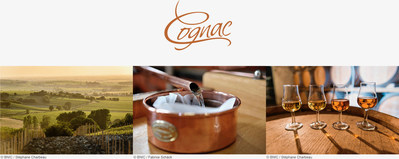

Staying True to Its Roots: Heritage and Terroir
Located on France's Atlantic Coast and 75 miles north of Bordeaux, the Cognac region and its resulting spirit both take their name from the town at its center—Cognac. Defined by its maritime climate and the Charente River crossing the length of the region, Cognac's history as a spirit-producing region dates back to the 16th century, though its wines had achieved notoriety three centuries before. The Dutch introduced the process of distillation, though the Charentais improved aspects to produce an exceptional spirit—undoubtedly influenced by the moderate climate and the chalky soils. The Cognac appellation is divided into six crus, each with its own unique characteristics: Grande Champagne (elegance, subtlety); Petite Champagne (delicacy, suppleness); Borderies (long finish); Fins Bois (roundness, intensity); Bons Bois (smoothness); Bois Ordinaires (intensity, smoothness).
Bottling Authenticity: From Vine to Still to Barrel
Cognac is a spirit produced from wine, using the utmost care and striving for the highest possible ingredient. Covering 186,000 acres, Cognac's vineyards are primarily planted with white variety Ugni Blanc, though Folle Blanche and Colombard are also found. These grapes produce high acid, low alcohol wines that are perfect for distillation — especially since Cognac does not allow the use of sulfur during winemaking. Once the wine has been made, it must be distilled by March 31st following the harvest. All Cognacs are double distilled in a special Charentais copper still, producing the eau-de-vie. There are many choices a Cognac producer can make from winemaking until aging and blending, which will impact the overall flavor profile of the spirit.
A Style for Every Experience: Designations and the Art of Enjoyment
Following maturation, the Master Blender for each Cognac producer follows his or her intuition to create a spirit that showcases the best of different crus or ages. The eau-de-vies to make the spirit must be aged a minimum of two years in oak before they can be called Cognac. The aged and blended Cognacs are divided into three groups, though Master Blenders generally use eau-de-vies that are older than the minimum requirement: V.S. (youngest eau-de-vie is at least 2 years old); V.S.O.P. (youngest at least 4 years old); and Napoléon or X.O. (youngest at least 6 years old). Each designation offers a distinct style, ideal for different occasions and uses. More youthful blends such as V.S. and V.S.O.P. lend themselves well to centerpieces in cocktails, while X.O. offers a complexity that is best savored on its own—or with a cigar. All styles are versatile enough to pair with food—from the fruity, aromatic younger blends to the complex, rancio older styles—Cognacs are smooth and supple to match a variety of cuisines.
Making the Connection: The People Behind Cognac and a Trajectory for Growth
The Cognac trade is made up of 274 merchants, 112 distillers and over 4,500 winegrowers—all of whom are represented by the BNIC. The Cognac region was delimited in 1909, and the BNIC was created in 1946 to further the knowledge of the region and its products. With a nearby port, Cognac has long been exported, and the majority of it finds its way to the United States. As the spirit category's largest market, the United States accounts for 41% in volume and 39% in value. In general, North America accounted for 77.3 million bottles of Cognac, up 14.2% in volume and 14.3% in value from the previous year.
Connect with Cognac on Facebook, Twitter and Instagram to learn more about the region and its products.
For more information, please contact:
Cassidy Havens, DipWSET | [email protected]
Stephanie Teuwen | [email protected]
Gabriela Marchand | [email protected]
Samantha Januszeski | [email protected]
Louise Jordan DWS | [email protected]
About the Bureau National Interprofessionnel du Cognac
Created in 1946, the mission statement of the BNIC is to develop Cognac, representing and defending mutual professional interests of both growers and merchants. The BNIC is responsible for organizing the production of Cognac and respond to market needs; informing about, protecting and promoting the Cognac appellation; facilitating access to markets; furthering relations between merchants and winegrowers; recording sales and exports; administering the aging control system; issuing authentication certificates for exports; and acting as the official body that and safeguards the Cognac appellation. It is made up of 100 staff members. In 1909, the Cognac area of production was delimited, and in 1936 it became an AOC. In 1989, the Cognac appellation was recognized as a Geographical Indication by the European Union.
About Teuwen Communications
Teuwen Communications is a full-service food and beverage public relations and marketing agency based in New York City. It provides high-energy, client-focused services across multiple platforms such as media and trade relations, brand strategy, event production, digital marketing and social media. For more information, please visit: www.teuwen.com.
The European Union supports campaigns that promote high quality agricultural products.
CAMPAIGN FINANCED WITH AID FROM THE EUROPEAN UNION
The content of this article represents the views of the author only and is his/her sole responsibility. The European Commission and the Consumers, Health, Agriculture and Food Executive Agency do not accept any responsibility for any use that may be made of the information it contains.
SOURCE Bureau National Interprofessionnel du Cognac
WANT YOUR COMPANY'S NEWS FEATURED ON PRNEWSWIRE.COM?
Newsrooms &
Influencers
Digital Media
Outlets
Journalists
Opted In
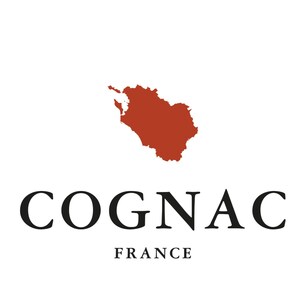
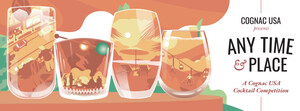
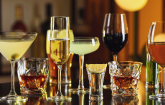
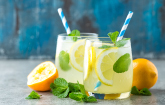

Share this article